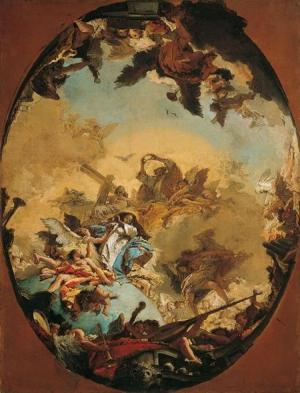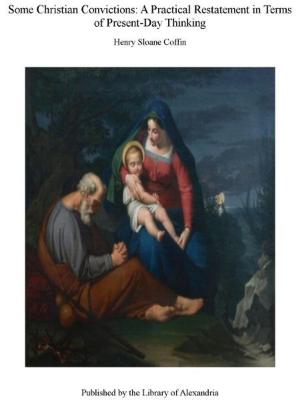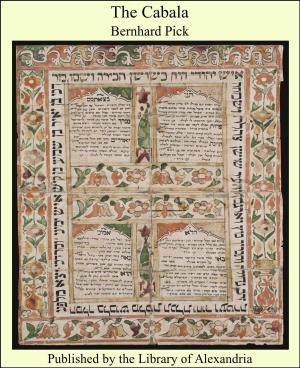| Author: | William J. Hardy | ISBN: | 9781465561688 |
| Publisher: | Library of Alexandria | Publication: | July 29, 2009 |
| Imprint: | Library of Alexandria | Language: | English |
| Author: | William J. Hardy |
| ISBN: | 9781465561688 |
| Publisher: | Library of Alexandria |
| Publication: | July 29, 2009 |
| Imprint: | Library of Alexandria |
| Language: | English |
On the other hand, as I have said, there is no harm in removing, from some uninteresting and valueless volume, the book-plate of a famous man. Everybody knows that Bishop Burnet or David Garrick had plenty of what they themselves regarded as 'rubbish' in their libraries; so that Burnet's book-plate in an actually valueless volume does not prove that the Bishop's shrewd eye ever scanned its pages, or that his episcopal hand ever held it. Besides, I know as a fact that it is a not uncommon trick for the possessor of the book-plate of some famous man to affix that book-plate in a worthless volume, and then offer the whole for sale at a price much higher than would be asked or obtained for the book-plate itself, though the value of the book may be nil! Without quarrelling with the name book-plate,—as applied to the marks of ownership pasted into books,—and without wasting time with discussion of suggestions for a better one, it may be admitted that the word is not altogether happily chosen. It perhaps suggests to the mind of the 'uninitiated' an illustration in a book rather than a mark of possession. But then at the present day there are not many 'uninitiated' amongst either buyers or sellers of books and prints, so that the inappropriateness of the name need not concern us. SIR THOMAS ISHAM'S BOOK-PLATE, BY DAVID LOGGAN. David Loggan, a German born, and an engraver of some note, has, in writing to Sir Thomas Isham in 1676, a no more concise name for Isham's book-plate than 'a print of your cote of arms.' Loggan, as a return for many favours, had sent Sir Thomas a book-plate designed and executed by himself. 'Sir,' he says, in the covering letter, 'I send you hier a Print of your Cote of Armes. I have printed 200 wich I will send with the plate by the next return, and bege the favor of your keind excepttans of it as a small Niew yaers Gift or a aknowledgment in part for all your favors. If anything in it be amies, I shall be glade to mend it. I have taken the Heralds painter's derection in it; it is very much used amongst persons of Quality to past ther Cotes of Armes befor ther bookes instade of wreithing ther Names
On the other hand, as I have said, there is no harm in removing, from some uninteresting and valueless volume, the book-plate of a famous man. Everybody knows that Bishop Burnet or David Garrick had plenty of what they themselves regarded as 'rubbish' in their libraries; so that Burnet's book-plate in an actually valueless volume does not prove that the Bishop's shrewd eye ever scanned its pages, or that his episcopal hand ever held it. Besides, I know as a fact that it is a not uncommon trick for the possessor of the book-plate of some famous man to affix that book-plate in a worthless volume, and then offer the whole for sale at a price much higher than would be asked or obtained for the book-plate itself, though the value of the book may be nil! Without quarrelling with the name book-plate,—as applied to the marks of ownership pasted into books,—and without wasting time with discussion of suggestions for a better one, it may be admitted that the word is not altogether happily chosen. It perhaps suggests to the mind of the 'uninitiated' an illustration in a book rather than a mark of possession. But then at the present day there are not many 'uninitiated' amongst either buyers or sellers of books and prints, so that the inappropriateness of the name need not concern us. SIR THOMAS ISHAM'S BOOK-PLATE, BY DAVID LOGGAN. David Loggan, a German born, and an engraver of some note, has, in writing to Sir Thomas Isham in 1676, a no more concise name for Isham's book-plate than 'a print of your cote of arms.' Loggan, as a return for many favours, had sent Sir Thomas a book-plate designed and executed by himself. 'Sir,' he says, in the covering letter, 'I send you hier a Print of your Cote of Armes. I have printed 200 wich I will send with the plate by the next return, and bege the favor of your keind excepttans of it as a small Niew yaers Gift or a aknowledgment in part for all your favors. If anything in it be amies, I shall be glade to mend it. I have taken the Heralds painter's derection in it; it is very much used amongst persons of Quality to past ther Cotes of Armes befor ther bookes instade of wreithing ther Names















